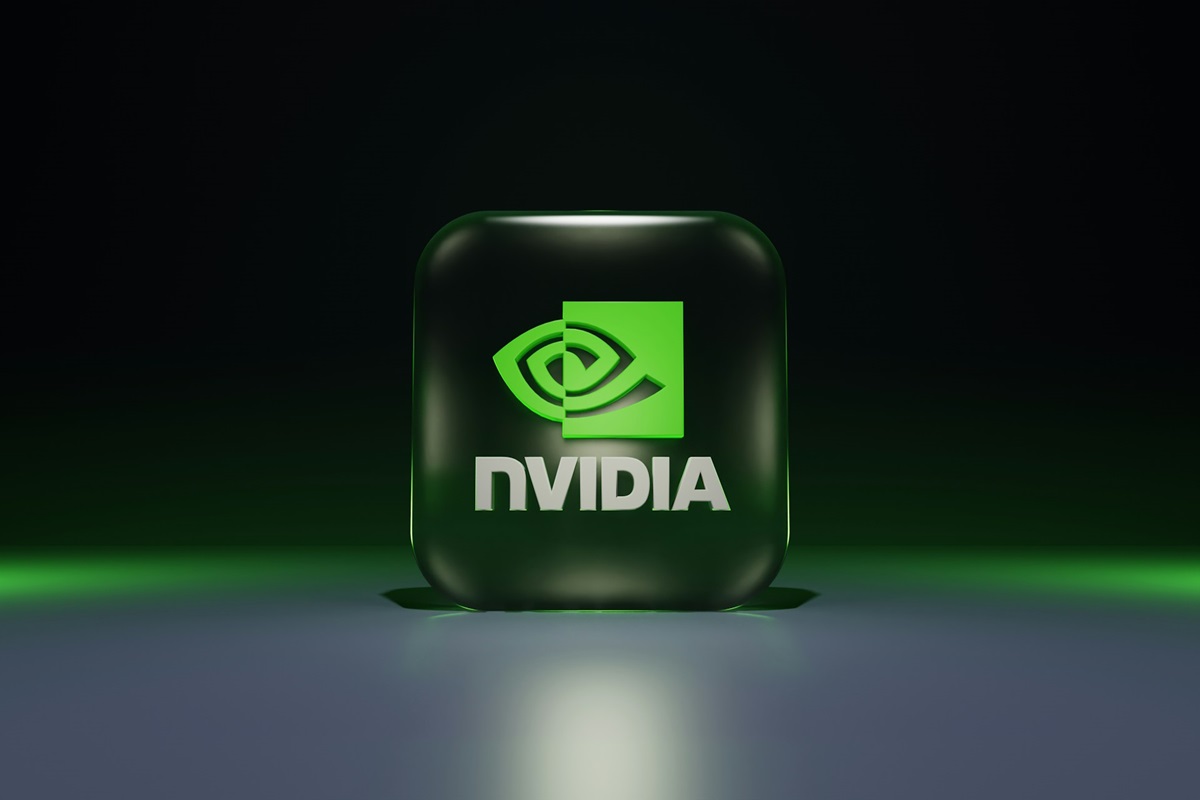Nvidia on Thursday, October 24, announced many new partnerships with major Indian companies and launched a Hindi language model.

Currently, the mentioned company, which is based in Santa Clara, California, and is the world’s most popular developer of graphics processing units for training and subsequent operation of artificial intelligence systems, is striving to scale its activities in the specified South Asian country. India is one of the world’s largest technology markets. It should also be noted separately that this South Asian country may become a beneficiary of the current state of affairs in the space of geopolitical relations. In the relevant context, it implies an increase in tension in the mentioned space, but first of all, that the practice of cooperation between the United States and China is beginning to deteriorate. In a certain sense, the condition of relations between the two countries is worsening and is gradually approaching a kind of point of no return. One of the most significant manifestations of this process is that the US has limited the supply of advanced chips and equipment for the production of appropriate microcircuits in China. Moreover, Washington has consistently stated its intention to scale the mentioned measures. Against this background, many technology companies are seeking to relocate production facilities outside of China, but at the same time maintain their presence in Asia, which is a space of significant opportunities and prospects. As part of these efforts, India can become a regional manufacturing center. Some companies have already begun to scale and develop their activities in the South Asian country. In this case, the motivation of the business is that it, fearing sanctions from Washington and its allies, minimizes operations in China and is ready to stop collaboration with Beijing in the future.
Last month, it became known about Tokyo Electron’s intention to form a team of engineers specializing in chips in India. This Japanese company, which operates in the manufacturing sector of equipment for making microcircuits, plans to hire and train engineers in a South Asian country. Foxconn, a Taiwanese contract electronics producer, is investing in India. Moreover, it is worth noting that New Delhi is making active efforts aimed at developing the homegrown technology sector, including the semiconductor segment. In February, the Indian government decided to allocate $15.2 billion in financing for the construction of chip-making plants. Part of this amount is intended for the implementation of the Tata Group project. In this case, it means the construction of a large chip manufacturing plant. New Delhi has also helped US memory microcircuit maker Micron Technology set up a $2.75 billion assembly and testing facility in India. It is worth noting that these examples are not the only ones in the context of the South Asian country’s efforts to develop the homegrown technology sector. Also, New Delhi will continue to scale up its corresponding endeavors as much as possible. The chip manufacturing industry generates significant economic prospects and is a factor of beneficial impact on the country’s position in the international political arena. India is at the initial stage of the path to appropriate results, but the vector of its movement contains considerable potential. It is also likely that New Delhi will try to maximize the benefits from the current geopolitical environment, in which companies seek to diversify their business within Asia and minimize cooperation with Beijing.
At the Artificial Intelligence Summit in Mumbai, the chief executive officer of Nvidia Jensen Huang spoke about the technology and efforts of the firm he leads in India. The event was also attended by Bollywood superstar Akshay Kumar and India’s richest man Mukesh Ambani, the chair of Reliance Industries, a conglomerate operating in areas such as natural gas, petrochemicals, energy, retail, entertainment, telecommunications, textiles and mass media, were present.
It is worth noting that Nvidia is currently one of the main beneficiaries of the so-called artificial intelligence boom. The corresponding global process began after ChatGPT debuted in November 2022. The mentioned digital product is an artificial intelligence-based chatbot that was developed by OpenAI and demonstrated impressive cognitive abilities that allow it to process information and generate original content. Amid the growing global attention to the machine intelligence industry, the market capitalization of the company headed by Jensen Huang has crossed the historical mark of $3 trillion.
Among Nvidia’s new partnerships in India, which were announced on Thursday, the deal on the company’s cooperation with Reliance is mentioned. As part of the relevant cooperation, a project on building an artificial intelligence infrastructure in a South Asian country will be implemented.
Jensen Huang stated that Nvidia is collaborating with companies such as Yotta and Tata Communications on building computing infrastructure. Also, in the relevant context, he said that by the end of 2024, India will have 20 times more computing power than just over a year ago.
Jensen Huang stated, that in the past, the South Asian country produced and exported software. In the future, he said, India is going to export artificial intelligence. The successful implementation of this intention will mean an additional large-scale factor of economic growth for New Delhi. In this context, it is worth noting that AI is an advanced technology that can modernize many workflows and contains a kind of global potential to become a new form of consciousness that surpasses the abilities of the human mind, including in the context of cognition of the world as a cosmological space.
At the Mumbai summit, Nvidia also announced the Nemotron-4-Mini-Hindi 4B. This digital product is a small Hindi language model. Companies running Nvidia hardware can deploy the mentioned model. Also, Indian IT consultancy firm Tech Mahindra uses Nemotron-4-Mini-Hindi 4B to launch its own Hindi artificial intelligence model called Project Indus 2.0.
It’s worth noting that small language models are trained on much more compact and specific datasets compared to large language models such as GPT-4 from OpenAI.
Nvidia also cooperates with other major Indian IT companies, including Infosys, Wipro, and TCS. As part of this collaboration, it is planned to train about 500,000 developers to create and implement artificial intelligence agents with its software.
It is worth noting that the expansion of Nvidia’s presence in India is due to the company’s efforts to find new regions for business growth. The firm is on a trajectory of rapid growth and continues to be one of the main beneficiaries of the artificial intelligence boom, but the corresponding upward dynamic is starting to show a slowdown. In the relevant context, it is worth noting that this year investors began to ask questions about the effectiveness of large-scale financial injections into the machine intelligence industry. Artificial intelligence is objectively what can be described as the main technology at the current stage of the development of human civilization. At the same time, attention to the relevant industry, including those with material forms of manifestation, may be excessive. Also, in this case, for investors, a kind of problem is that currently, it is impossible to give an unambiguous or relatively detailed answer to the question of what configuration of artificial intelligence will exist at the peak of its technological evolution. AI has massive potential, but its limits are still unidentified for certain. In fact, in this case, investors are faced with a technology that has significant but partially unknown prospects. Making financial investments in projects with uncertain results, even at the level of expectations, is a risky decision that many will refuse. At the same time, this circumstance does not negate the significant economic potential of artificial intelligence, which is already obvious and is being implemented in practical plane. Investors are also concerned that they do not yet understand exactly when the return from financial injections into the machine intelligence industry will be received.
Indian Prime Minister Narendra Modi is seeking to gain large foreign technology companies to increase investment in the South Asian country. In this case, special attention is paid to firms operating in the semiconductor segment of the technology sector.
Currently, India is striving to establish itself as a major player in the semiconductor industry. As part of these intentions, New Delhi is making efforts to form a self-sufficient and independent domestic chip manufacturing. It is worth noting that against the background of growing geopolitical tensions, which contain risks of degradation of global cooperation, the independent producing sector is critically important and, in a certain sense, is a vital necessity. Also, in this context, it is appropriate to mention that the experience of the coronavirus pandemic, when failures in the international supply chain were recorded against the background of various restrictive measures related to a difficult sanitary and epidemiological situation, testified to the importance of technological sovereignty. Moreover, chips as a kind of basic material component of advanced technologies in the context of the active development of the global digital environment will increasingly affect the economic and even political prospects of countries over time.
Narendra Modi has several goals related to the expected progression of the semiconductor industry in India. In this case, the main aspiration is focused on increasing the financial volume of the South Asian country’s electronic industry from the current $155 billion to the $500 billion mark by the end of the current decade.
Jensen Huang stated that India is very important for the global computer industry and is central to the IT industry.
Mukesh Ambani’s presence in Mumbai is indicative of his conglomerate’s ambition to become a leading player in the artificial intelligence area in the South Asian country. Reliance Jio, a telecommunications company owned by Reliance Industries and an upstart less than a decade ago, is currently the largest mobile provider in India. Neil Shah, a partner at Counterpoint Research, said during a conversation with media representatives that in the next few years the mentioned firm plans to build a large-scale artificial intelligence infrastructure to democratize AI, using data from almost a billion Internet users. Reliance Jio aims to become the flag bearer for the widespread adoption of machine intelligence from consumers to enterprises and the government. Neil Shah stated that this unlocks a significant opportunity for Nvidia and other companies.
India is a potentially large arena for the introduction of artificial intelligence. The South Asian country, with a population of 1.4 billion people, adopts AI in industries such as agriculture, education, and manufacturing. In this case, the goal is to boost efficiency. At the same time, India’s share in the revenue structure from advanced technologies is still small. Over time, the corresponding indicator may increase. Major technology giants, including Microsoft and Meta Platforms, are betting on India as a fast-growing economy and a large-scale market that can become an alternative to China. The International Monetary Fund predicts that the gross domestic product (GDP) of the South Asian country will rise by 7% in the current year. The experts of this organization also expect that in 2025 the corresponding figure will increase by 6.5%.
As for Nvidia’s activities in India, in this context, it is worth mentioning that the company began its operations in Bangalore, in the southern part of the country, two decades ago. The firm also has development centers in three more Indian cities, where a total of about 4,000 engineers work.









